Back Issues
A few back copies remain available of some issues; those no longer available in hard copy can be supplied in PDF. Please inquire about copies of issues still available as hard-copy or obtaining PDFs.
Subscription Info
Upcoming Issue
The Bruckner Journal is published three times a year, in March, July and November - since 1997 - and is available by subscription only.
Volume Twenty-Eight, Number One will be published in March 2024. Should you wish to contribute an article, short essay, letter or comment to the Journal, on any Bruckner-related subject, please contact us.
Page 2...
A different aspect of Bruckner’s revisions in this period is also crucially important, but is much less clearly recognized and understood than his metrical revisions. It involves his use of the methods of counterpoint in the symphony. Most simply put, counterpoint is the craft of combining two or more melodic lines. In its strict forms counterpoint involves the coordination of several independent voices that imitate each other literally, as in a round or a canon. Particularly important in Bruckner’s symphonies are the classic contrapuntal devices of stretto, in which voices enter closely together and thus overlap, and inversion, in which a voice is imitated not directly, but upside down.
These methods of counterpoint, which are quite ancient in origin and familiar to every classically trained musician, are naturally at home in the fugue and in choral and organ music. Bruckner’s music originated in those genres, and counterpoint was, therefore, almost second nature to Bruckner even before mastered the principles of the art counterpoint with utter thoroughness under Simon Sechter’s tutelage from 1855-1861. The three great Masses he composed following his years with Sechter are profoundly contrapuntal and contain many outstanding examples of large-scale counterpoint, most spectacularly in the fugal setting of “Amen” that ends the Gloria in each of them. Bruckner’s cultivation of counterpoint in the field of sacred vocal music did not cease, but continued in lapidary form in his motet compositions and culminated in fugues in the Te Deum and later Psalm 150.
In the 1870s—after Bruckner had shifted his primary compositional focus to the Symphony—he became fascinated with how the methods of strict counterpoint could be utilized most effectively in this genre, where they were much less commonly used. The greatest and clearest result of this interest is, surely, the Fifth Symphony, the Finale of which is among the most thoroughgoing treatments of Fugue in the entire symphonic literature.
To offer a very concise example of Bruckner’s use of strict counterpoint in this movement, here is the opening of the four-part fugue that begins the second half of that movement:
The Fifth is as Bruckner rightly said, a contrapuntal masterpiece—and one he declared he would not attempt to repeat at any price. He reportedly once told his student Josef Vockner: “I would not want to write that again even for 1000 Gulden” and also declared “‘never again will I write something like that. It’s my greatest work.” Bruckner never did write another symphonic movement like the Finale of the Fifth, yet the intense immersion in the strictest symphonic counterpoint involved in composing it seems to have been a decisive, even transformative, experience that helped him to develop new ways of utilizing counterpoint in the symphony. These generally did not involve the inclusion of sustained passages of Fugue in his symphonies, as he did in the Fifth’s Finale, and was to do on a more limited scale in the Finale of the Eighth and later essayed in the unfinished final movement of the Ninth (and had done already in the Nullte.) But rather, he forged new musical devices that were derived from fugal methods and that could be incorporated flexibly into the syntax and form of sonata-based symphonic movements.
These new methods can be seen taking shape in the first movement of the Fifth, where we encounter a new way of using the devices of counterpoint, not based on sustained four-part imitation, but rather in focused passages that present key motives in inversion and close imitation. The development section contains some of the most remarkable pages Bruckner ever crafted:
Here we find Bruckner presenting the Hauptmotif of the first movement in this manner, tightly overlapping with great intensity (at K), in its original form and then in inversion.
As this section continues, (at L) Bruckner makes use of another possibility of counterpoint by combining two musical ideas simultaneously, with the main motif again in both original and inversion and now adding the fanfare motif from the introduction.
These pages offer a powerful example of how Bruckner was able to use methods derived from fugue —most notably close, overlapping imitation (i.e., stretto or in German, Engführung) and inversion—not as part of a fully developed fugal passage, but rather in a freer manner as part of a symphonic sonata form movement, as a means of creating tension within a development section. Such use of these methods soon became a regular element in Bruckner’s symphonic toolbox. Late in his life Bruckner made a comment that pertains to this very aspect of his style: “Counterpoint is not genius, but only a means to an end.” He was correct, of course: starting in the mid-1870s in his symphonies counterpoint became not an end in itself, but rather a means to a new, specifically symphonic end. This process can be observed with fascinating clarity in the development of the Fourth Symphony.
At much the same time that he was completing the Fifth, Bruckner returned to the recently-completed Third and Fourth Symphonies and added more counterpoint to certain passages in these works. He literally added it, especially in the Fourth. We cannot say exactly when this all occurred; in 1875-1876 Bruckner’s composition of the Fifth and his revision of the Third and the Fourth overlapped in time.
Bruckner’s Work on the Third, Fourth and Fifth Symphonies, 1872-1875
Third Symphony composed late 1872 — Dec. 1873
Fourth Symphony composed Jan. — Nov. 1874
Fifth Symphony, sketched Nov. 1874 — May 1875
Third Symphony, “verbessert” before 12 Jan. 1875
Fourth Symphony, imitationen added 1875
Fifth Symphony, Scherzo composed April — June 1875
Fifth Symphony, Finale first sketch May 1875
Fifth Symphony, Finale composed June — Nov. 1875
In the Third Symphony, as the research of Thomas Röder first revealed, Bruckner added some stretto-like imitation, mostly in the brass, in intensifying and tension-building passages—or what are often called Steigerungen in German—in which he uses imitation and stretto as a means of intensification. Röder suggests that this must have happened around January 1875, when Bruckner wrote “I have significantly improved the Wagner Symphony (in D minor)." This would have been at just the time he began drafting the Fifth.
Shortly after this, sometime later in 1875, Bruckner returned to the Fourth Symphony, which he had initially completed the previous year. At this time—as my research has shown—again added a layer of imitative counterpoint to a score he had recently finished, but this time he went much farther. Part of what he did, as in the Third, involved the addition of imitation to Steigerungen. He also added new imitation to passages across the symphony. Since he worked directly in the composition score he had completed in the previous year it is easy to gain a preliminary visual sense of what Bruckner added.
These additions appear in sharp relief when compared with an early copy of the score, which preserves the music in its original form:
The effect of these additions is quite revealing, as this following example shows:
The enriched musical texture is so dense, so intricately woven, that it almost loses its identity as strict counterpoint and becomes something like a sonic carpet comprised of dense layers of imitation. It is remarkably audacious in conception, and pushes the limits of what is practicable for both players and audience. Manfred Wagner, one of the first scholars to study this version, argued that in passages like this Bruckner composed “with no regard for players or listeners but worked, as it were, purely abstractly on the drawing board.” That statement probably goes too far, but Wagner’s observation is not without some basis. It is telling that in October 1878, as Bruckner was completing a comprehensively revised version of the Symphony, he referred to the early version as “impractical” when he wrote to Wilhelm Tappert requesting the return of the score of the first version he had sent to Berlin in 1876: “Herr Musikdirector Bilse has not yet allowed the music of the old impractical 4th Symphony to be returned to me.”
Here we begin to sense something of the compositional crisis that I mentioned earlier. Not only do Bruckner’s contrapuntal additions in the Fourth Symphony, however fascinating they may be, border on the excessive, but he seems to have been uncertain about them almost as soon as he added them. In the summer of 1876, as he prepared to send a copy of the score to Berlin for a possible performance led by the conductor Benjamin Bilse—a performance that never materialized—he made some attempts to clarify the aural effect of these passages by modifying the dynamics. He also added a telling comment to the passage in the first movement that we just heard. A page or two earlier he had written—actually hastily scrawled—the word “Nacht” (“night”) (m. 171) followed by the word “Träume” (“dreams”) (m. 192), presumably to give the conductor some imagery to help him grasp the mood of the music. And then, at the start of the passage in question (m. 202), he wrote “verworrene Träume der Nachte”—“confused dreams in the night,” a description that seems to betrays a creeping awareness of how befuddling, and perhaps even irrational this musical texture might actually be.
It must have been at this time that Bruckner was coming to realize that he needed to revise this symphony, a process that eventually led him to thoroughly rework the first two movements, compose an entirely new Scherzo and a new version of the Finale, and a year later again recompose that Finale. Part of Bruckner’s motivation in making this decision surely was to produce a version that was more practical and realistically performable, yet something deeper was at work too. Bruckner made an extremely significant comment about this in 1877: “Yesterday, I picked up the score of the Fourth Symphony and saw to my horror that I had damaged the work with so much imitation, and indeed often robbed the best parts of their effect [Wirkung]. This addiction to imitation is almost a sickness.”
Bruckner’s declaration that his dependence on imitation had become excessive, even unhealthy, certainly seems to be an expression of a crisis, but his words also indicate that he recognized the problem and was in the process of overcoming it. His use of the term Wirkung—or “effect”—is crucial. It shows that he was becoming increasingly interested and aware of the need for his symphonies to “work” in performance, to make the desired effect upon an audience in concert. It is significant as well, that Bruckner referred several times to the value of comprehensibility in his symphonies; indeed he later described the revised version of the Fourth as “the most comprehensible and popular of my works.” Comprehensibility is a quality that is not empahsized by the heavily enriched textures that Bruckner had created in 1875, but it is one that Bruckner was now increasingly interested in.
By the end of 1878 he had seemingly finished a new version of the entire symphony, and then began to compose his Quintet for strings. Then in late 1879 he decided quite suddenly to again revise the Finale of the Fourth. This new version was finished the next year. In fact, the first movement of the Sixth and the new Finale for the Fourth were composed at much the same time, and by then what might be called the style of Bruckner’s new symphonic maturity had fully emerged.
Bruckner’s Work on the Quintet and the Fourth and Sixth Symphonies, 1874-1881
Fourth Symphony first version composed Jan. — Nov. 1874
Fourth Symphony, imitationen added 1875
Metrical studies of Beethoven Summer 1876
Fourth Symphony, metrical revision Summer 1876
“This addiction to imitation is almost a sickness” 1 May 1877
Fourth Symphony, 1878 version composed Summer 1877 — Dec. 1878
String Quintet composed ca. Dec. 1878 — July 1879
String Quintet, Intermezzo completed Dec. 1879
Fourth Symphony, new Finale composed Nov. 1879 — 5 June 1880
Sixth Symphony, first mov. composed Sept. 1879, June -Sept. 1880
Sixth Symphony, Adagio composed Sept (?) — Nov. 1880
Sixth Symphony, Scherzo composed Dec. 1880 — Jan. 1881
Fourth Symphony, first performance 20 Feb. 1881
Sixth Symphony, Finale completed Sept. 1881
Fourth Symphony, Finale revised ca. Nov. 1881




Symphony no. 4, 1874 version, first movement, mm. 205ff (transcribed from Austrian National Library, Music Collection, Mus.Hs. 3177-1)
*click images to enlarge*
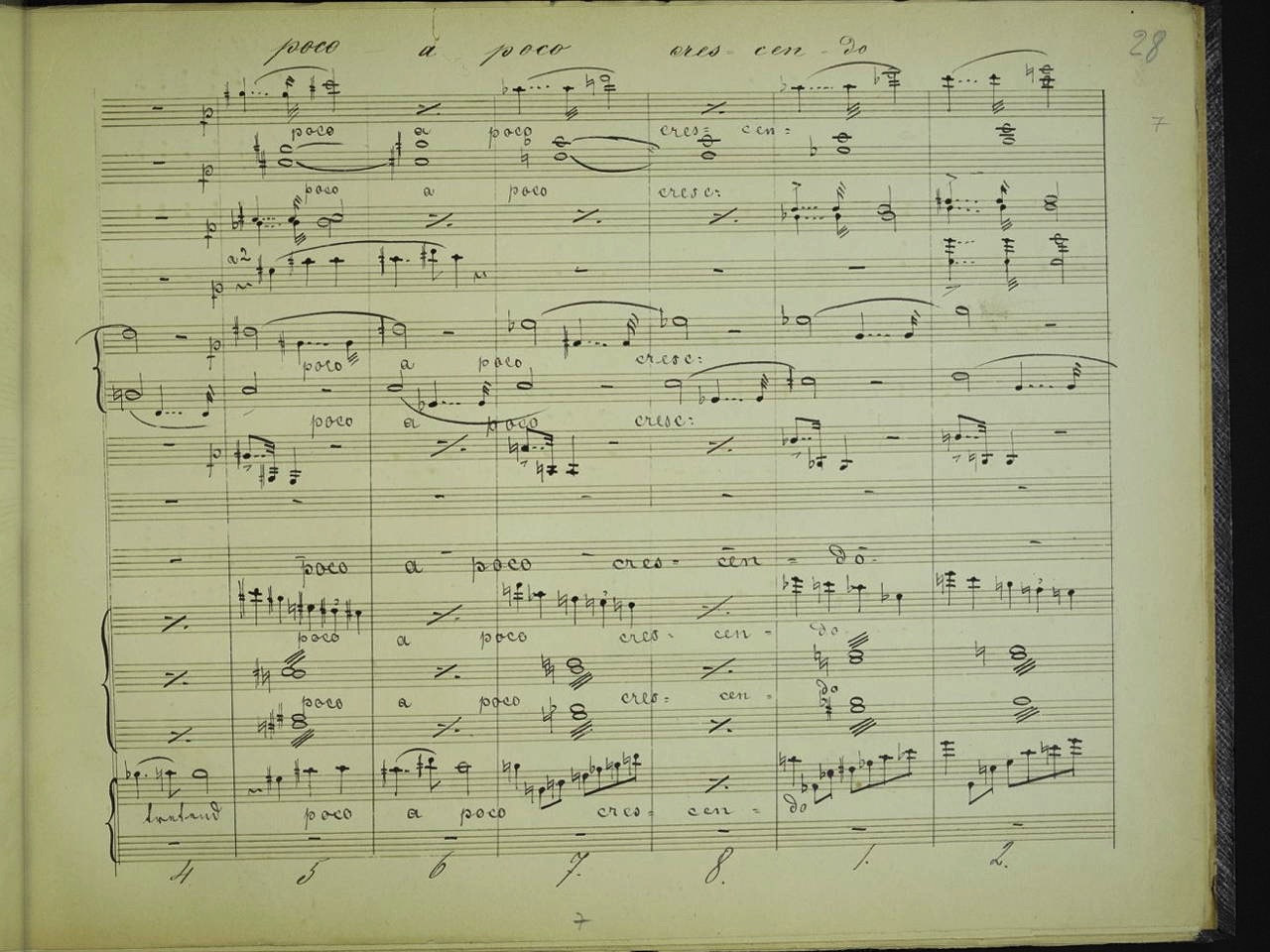
Austrian National Library, Music Collection
Mus.Hs. 3177-1, fol. 28r
*click image to enlarge*
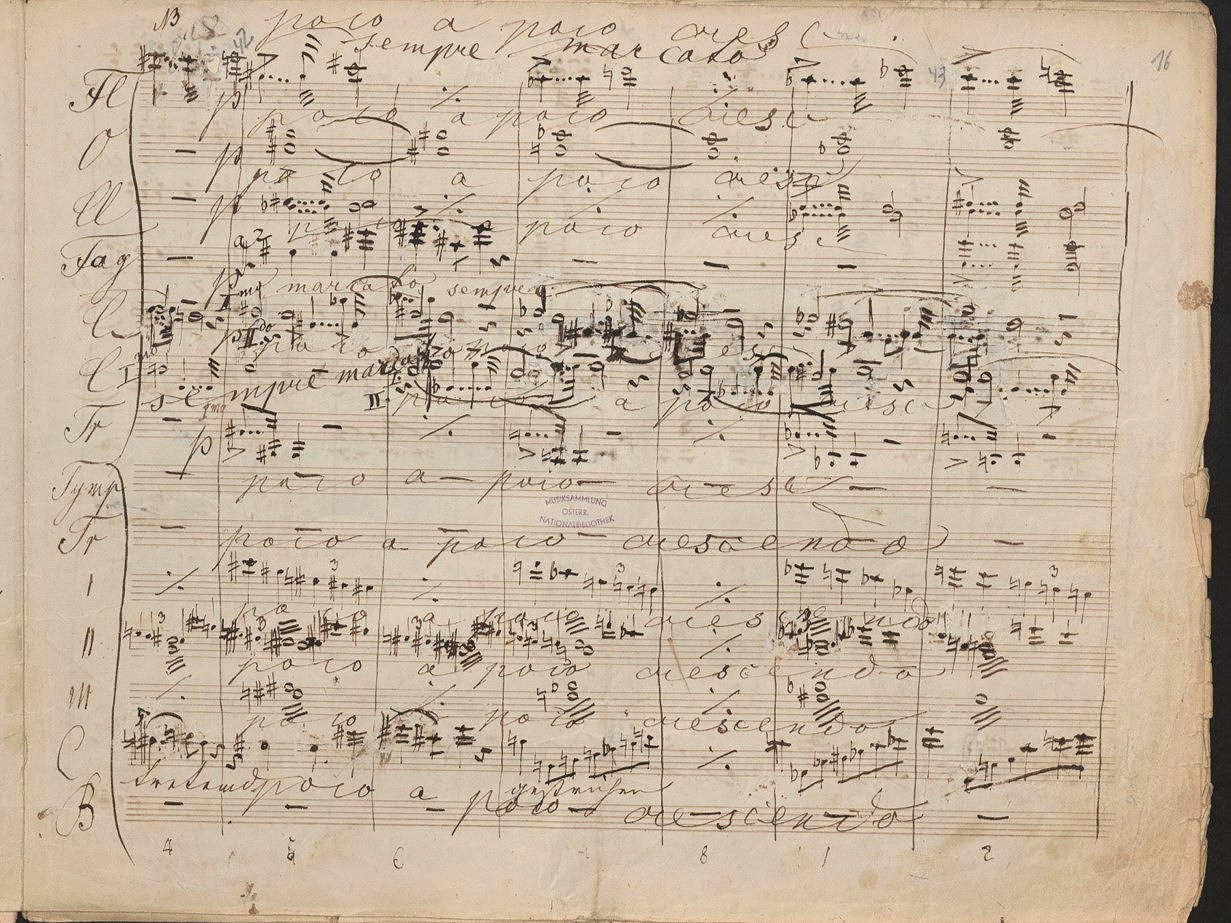
Austrian National Library, Music Collection
Mus.Hs. 6082, fol. 16r
*click image to enlarge*
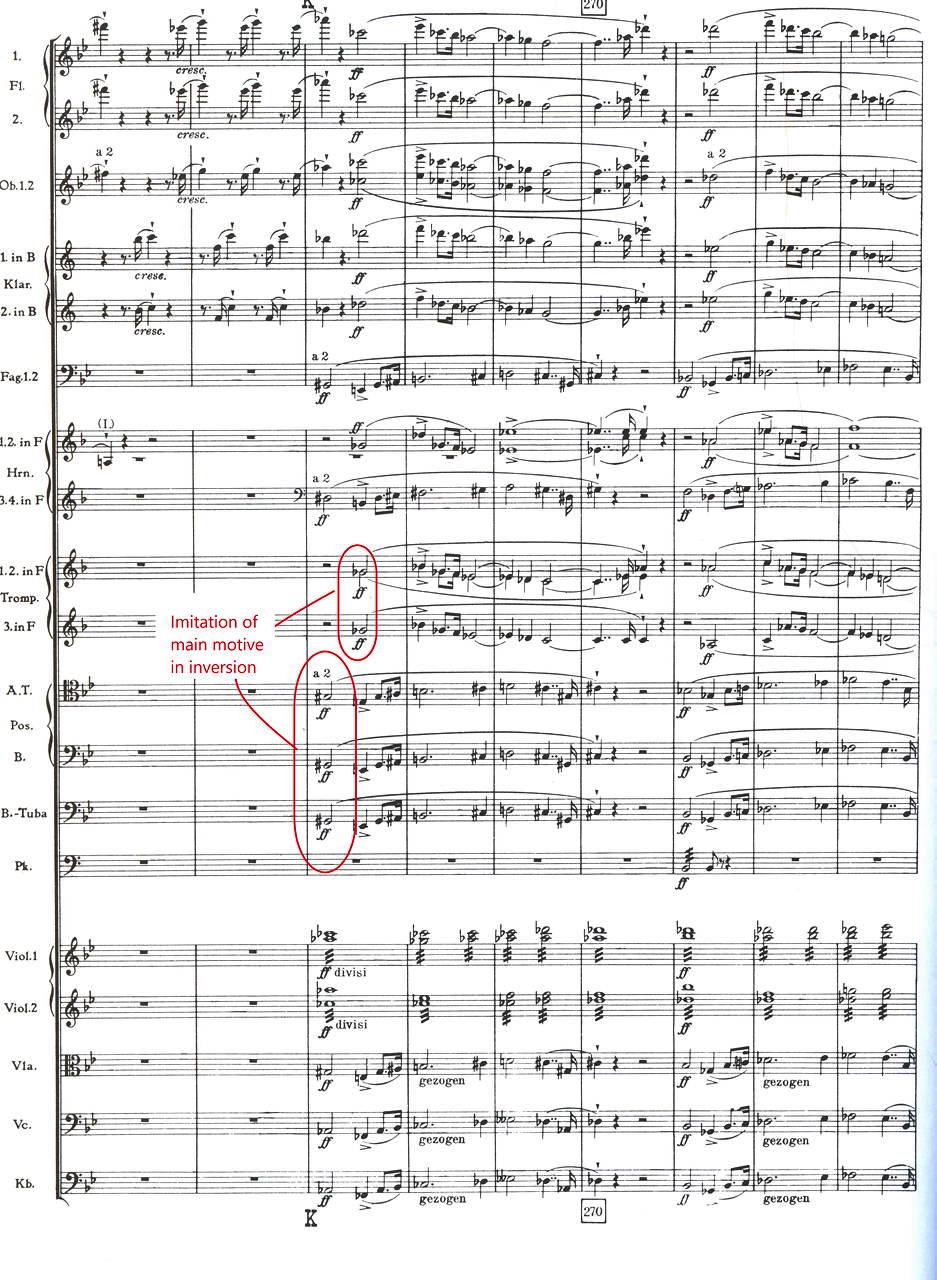

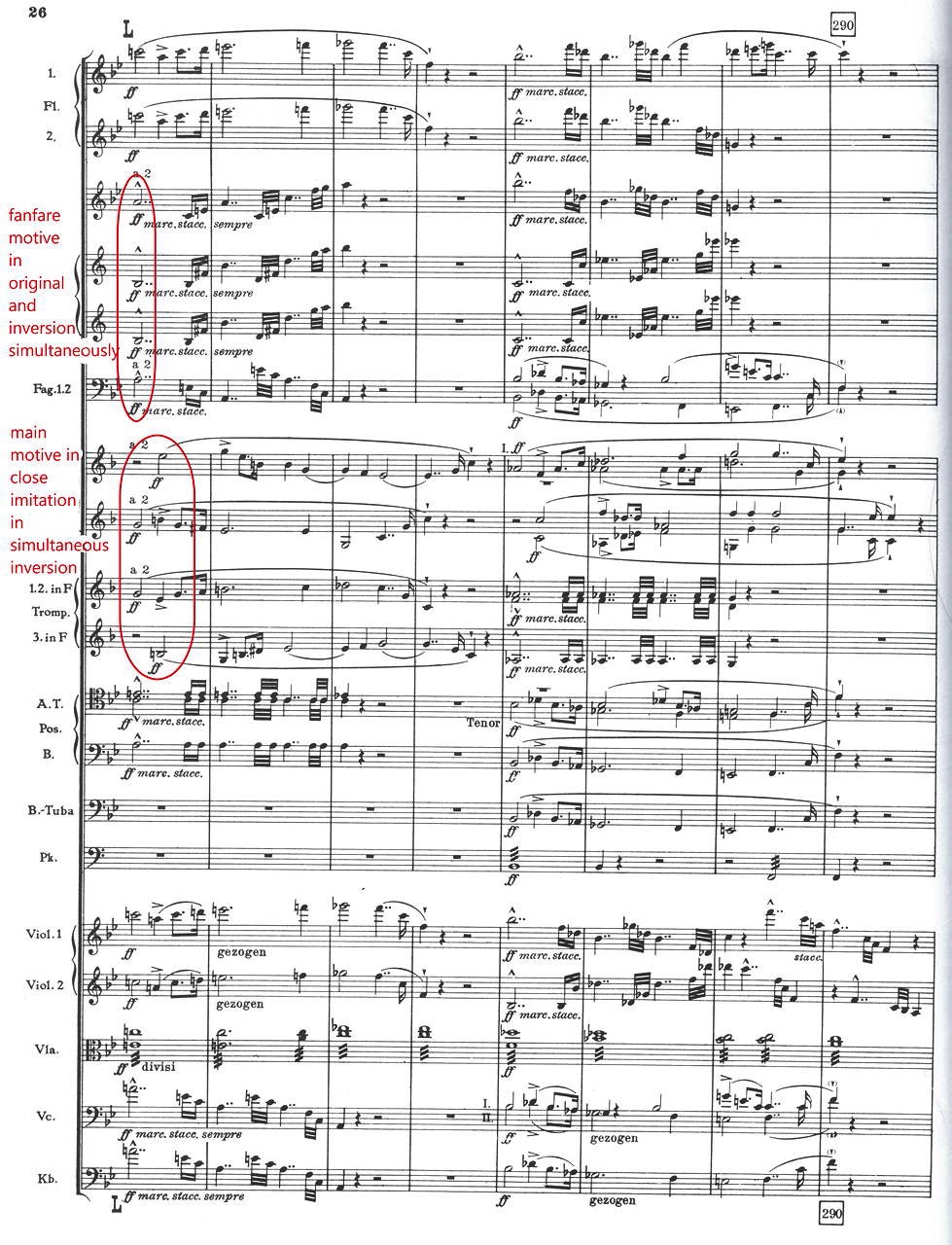
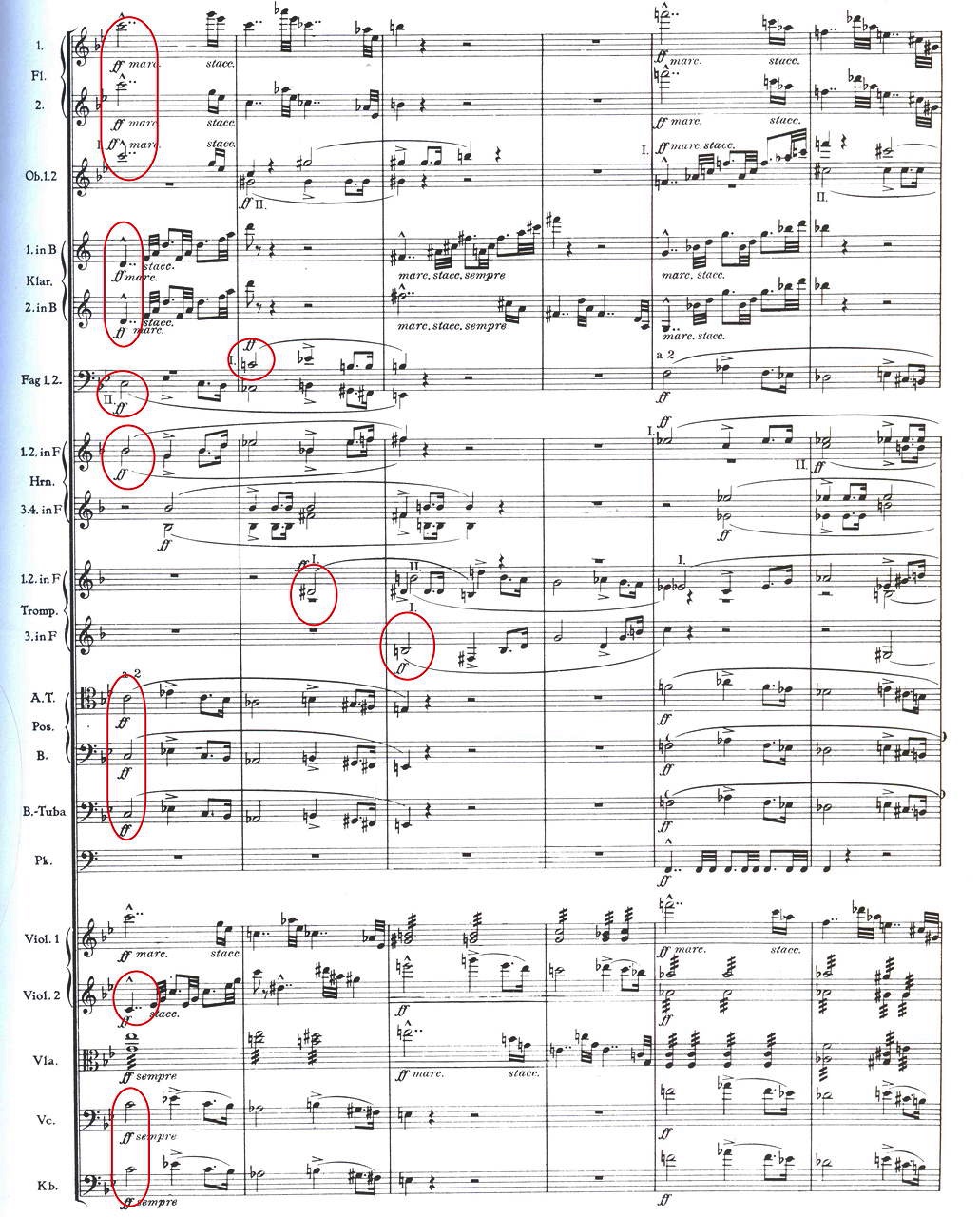
Symphony no. 5, first movement, mm. 265ff
(ed. Nowak)
*click image to enlarge*
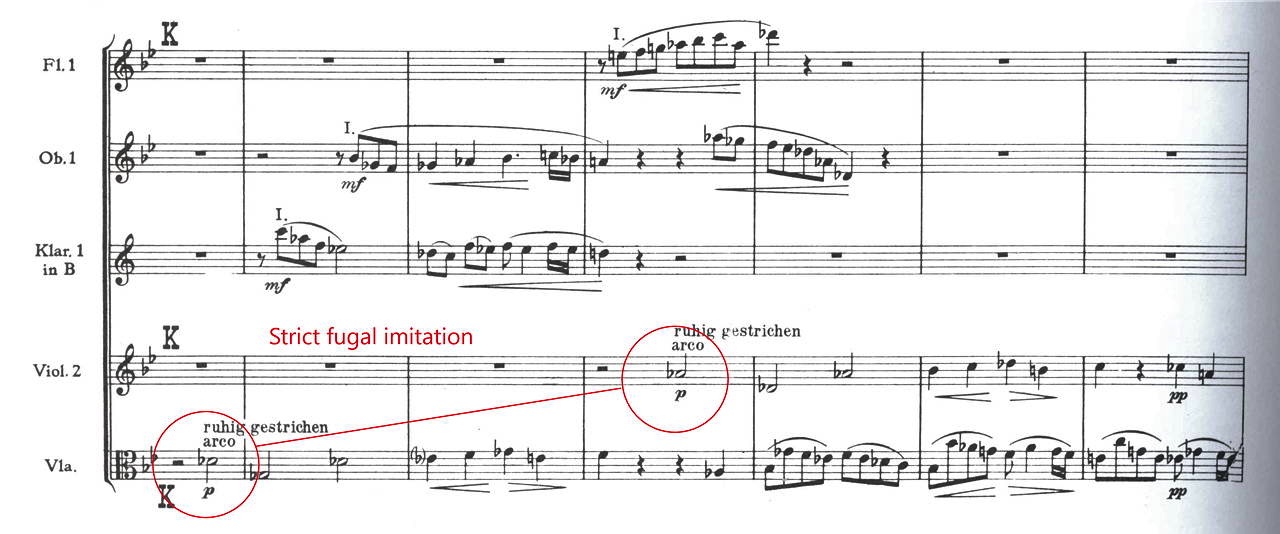
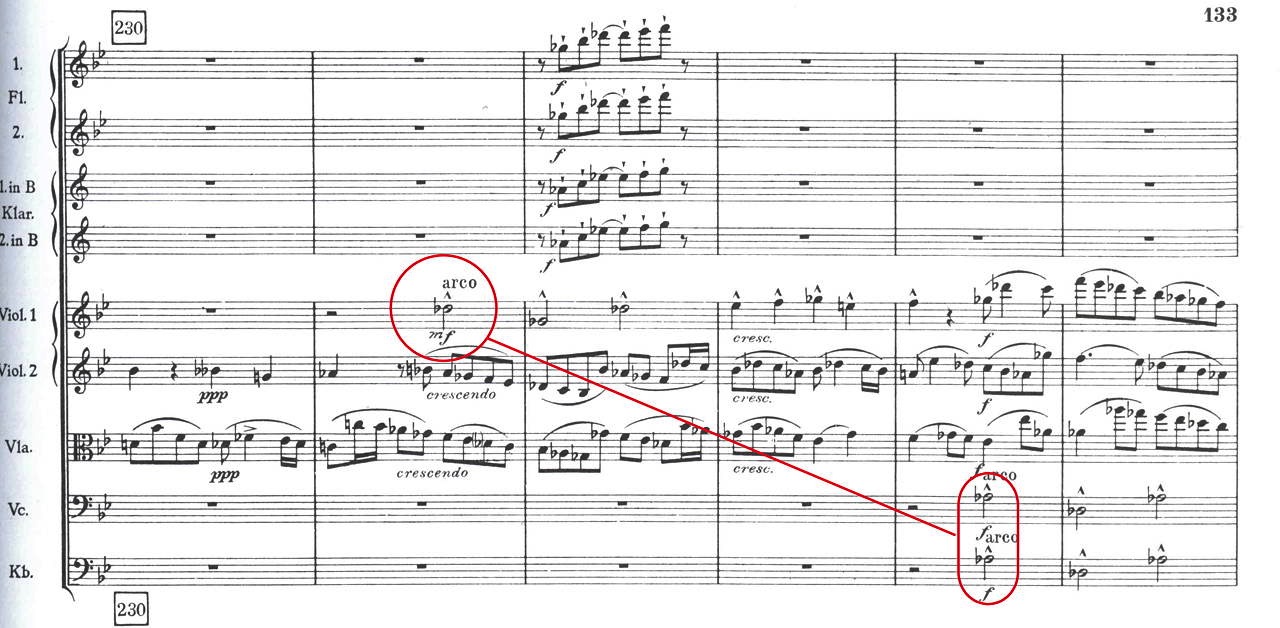

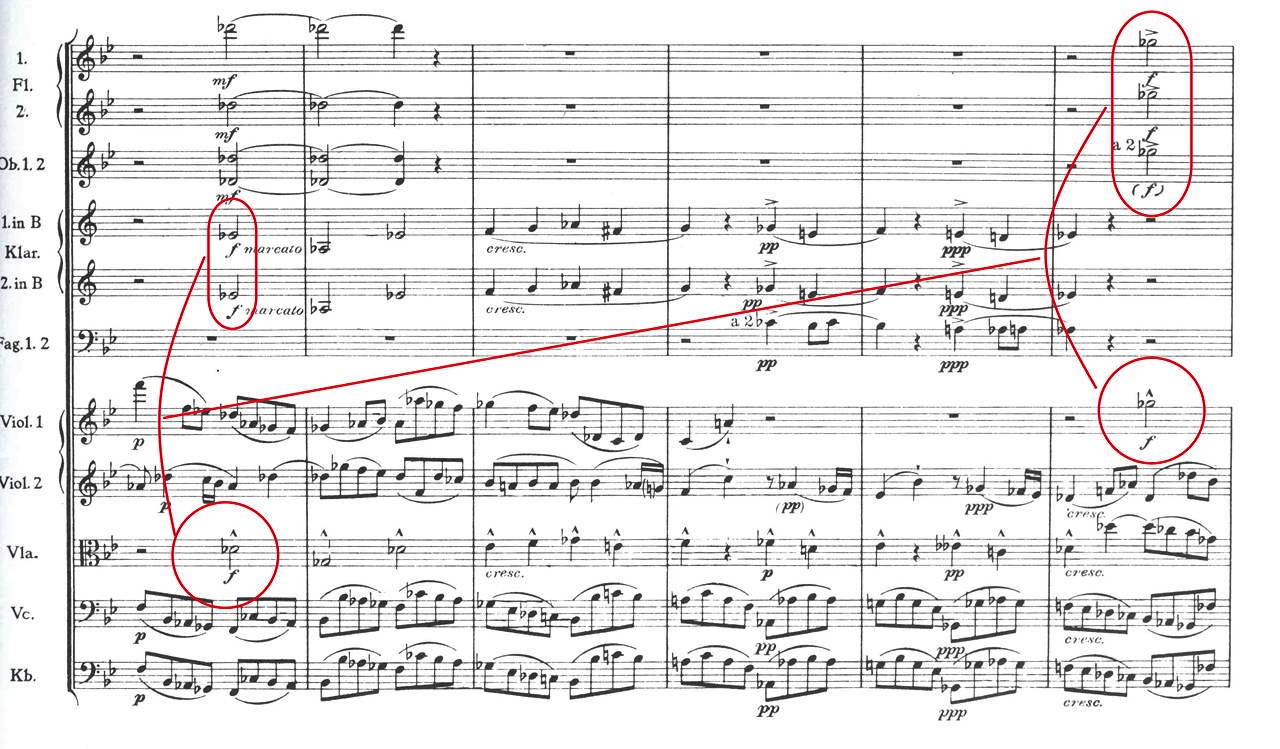
Symphony no. 5, Finale, mm. 211ff
(ed. Nowak)
*click image to enlarge*



